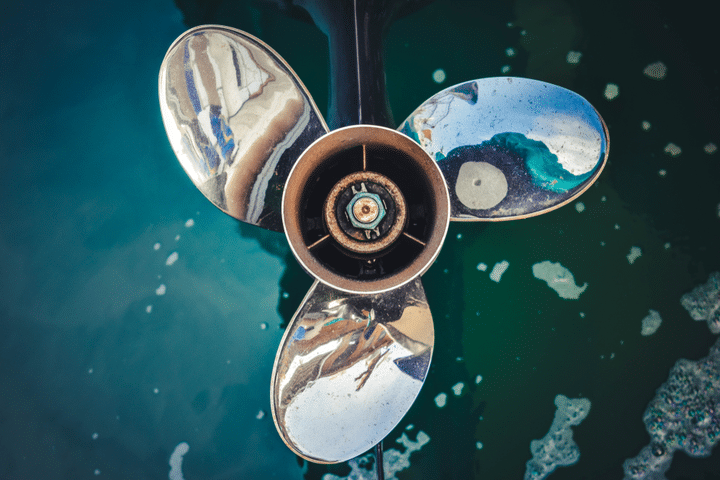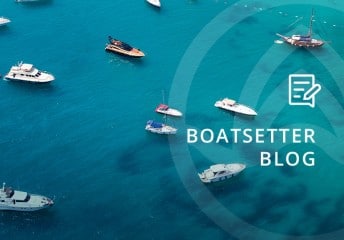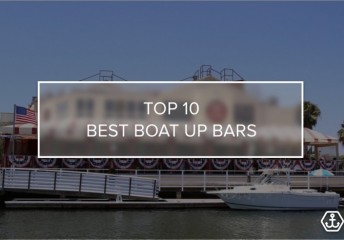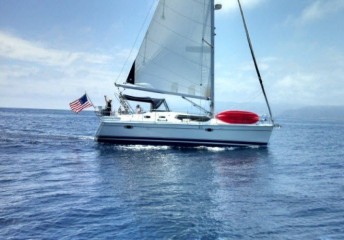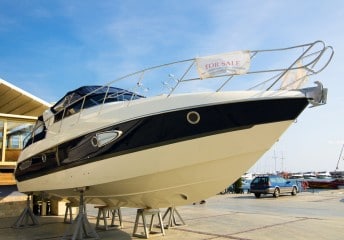3-Blade Propeller Vs. 4-Blade Propeller
Last Updated on September 28, 2023 by Boatsetter Team
A popular debate in the boating community between boaters and boat enthusiasts concerns the comparative benefits and drawbacks of 3-blade vs. 4-blade propellers for an outboard motor. Recent advances in outboard technology have multiplied the choices a consumer has when choosing the right propeller. Propeller manufacturers have been busy developing new 3-blade and 4-blade propellers at an alarming rate. We’ll go over the pro and cons of both in our post: 3-blade propeller versus 4-blade propeller.
Post summary:
- 3-blade vs 4-blade propellers and top speed
- 3-blade vs 4-blade propellers and acceleration
- 3-blade vs 4-blade propellers and handling
- 3-blade vs 4-blade propellers and fuel efficiency
- 3-blade vs 4-blade propellers and load carrying
- 3-blade vs 4-blade propellers and cavitation and ventilation
Keep reading and we’ll help you decide whether a 3-blade propeller or a 4-blade propeller is right for you and your trusty vessel.
List. Rent. Share—Only at Boatsetter
Whether a 3-blade propeller or a 4-blade propeller is right, you will completely depend on your boating needs and what is important to you. Is it top speed, cruising speed, load carrying, slow-speed handling, slow trolling, fast trolling, fuel economy, or various other factors? No single propeller is going to be perfect for every single need and desire. There will be compromises. For example, acceleration may be compromised for top speed and fuel economy. Ultimately, it all comes down to what your priorities are.
Undoubtedly, the most common type of propeller used on boats is 3-blade propeller. Their performance is usually very good or acceptable in most or all sectors. They normally achieve higher top speeds and are available in a bigger variety of diameter-pitch sizes with lower costs. However, throughout the past few years, the usage of 4-propeller blades has become much more common. They have entered the fold of the constant struggle to improve boat performance as much as possible and have begun to shed their branding as being the slower of the two options.
Moreover, there has been an evolution in hull design, meaning that newer boats with reduced friction hulls (which are becoming much more popular) have greatly decreased the load applied to the engine, allowing for higher load tolerances. The result is that many engines, even lower-horsepower engines, can accommodate the additional load of the four-blade propeller.
3-blade vs 4-blade propellers and top speed
When you go from a 3-blade to a 4-blade propeller you are bound to lose some level of pitch. Pitch is the theoretical distance a propeller will move through the water for each revolution. For example, a 19-inch pitch propeller should move the boat forward 19 inches with each evolution, assuming no slippage.
Typically when you add blades, you get rid of some of the pitch. The reason for this is that the addition of the extra blade causes increased drag, which, in turn, requires more horsepower to achieve the same rpm. Since the horsepower is limited, the RPMs drop and the speed will tend to drop with it. This is why when going from a 3-blade prop to a 4-blade prop, you usually drop an inch or more of the pitch to keep rpm parity. An example would be going from a 21” pitch 3-blade propeller to a 19” pitch 4-blade propeller.
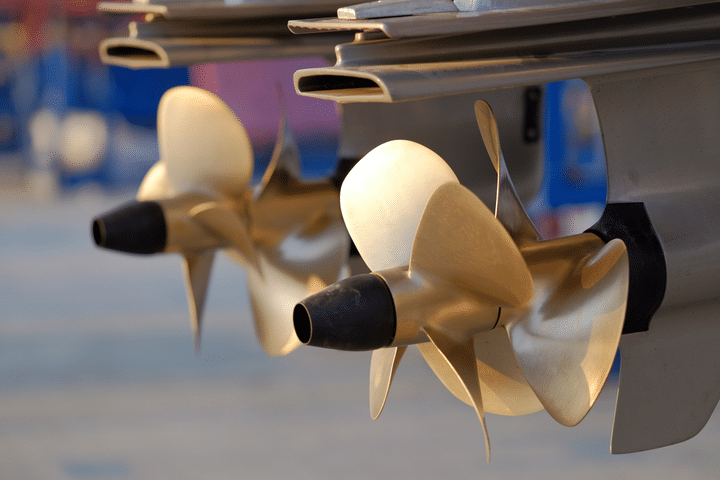
The real trade-off is at the high end of the RPM scale when you try to get your boat to go at its fastest speed. At the higher end of the RPM scale, the 3-blade propeller will almost always outperform the 4-blade propeller, so you can expect to lose about 5% of the top speed with a 4-blade propeller. If one of your priorities is that your boat is able to go as fast as possible, you would want to count that consideration in favor of a 3-blade propeller rather than a 4-blade propeller. However, there are many more considerations to take into account, which we will go over below.
3-blade vs 4-blade propellers and acceleration
A four-blade propeller will usually have a smaller diameter from the same pitch size as the 3 blade equivalent, which is one of the reasons that they spin up more quickly than the 3 blade counterparts, typically providing better acceleration.
Additionally, although the blades on a 4 blade propeller are typically smaller than the blades on a three-blade propeller, they offer more total blade area because of the additional blade, giving them more grip on the water. This means that they often provide more lift at the stern, which helps accelerate the hull, especially if it is stern-heavy.
When it comes to acceleration, 4-blade propellers seem to have the upper hand on 3-blade propellers.
READ MORE: Marine Electronics: Understanding the Basics
3-blade vs 4-blade propellers and handling
One of the main reasons people seem to choose 4-blade propellers over 3-blade propellers is the benefits afforded by the increased blade area given by the extra blade. This extra blade area provides increased water displacement capability, greater lift, and better grip than the 3-blade propeller counterparts. Because of these benefits, 4-blade propellers have been shown to have better handling than 3-blade propellers, especially at slow speeds where the increased grip on the water has many beneficial effects.
3-blade vs 4-blade propellers and fuel efficiency
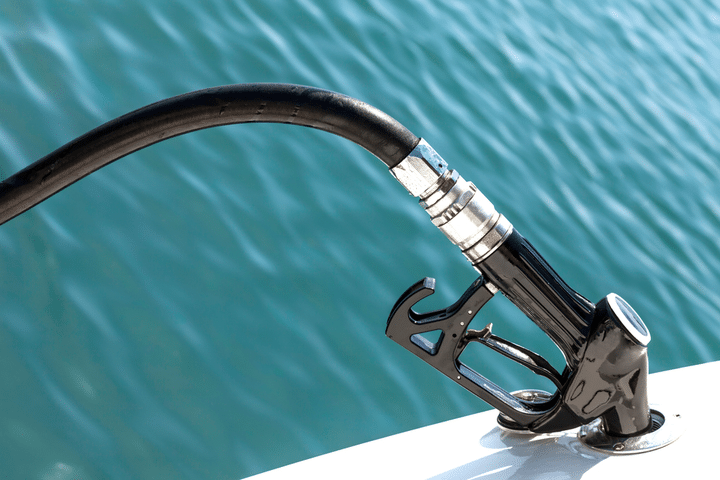
For those who spend a good amount of time out on the water, the fuel efficiency of a boat’s motor can be a large consideration. The effects that different propellers have on fuel efficiency will be of primary concern. At low speeds and high speeds, 3-blade propellers and 4-blade propellers seem to have very similar fuel efficiency standards. Still, almost categorically, 4-blade propellers offer at least slightly better fuel economy at mid-range RPMs.
3-blade vs 4-blade propellers and load carrying
Due to the greater increased blade area of the 4-blade propellers and the increased grip on the water that this provides, a 4-blade propeller will often perform better than 3-blade propellers when carrying heavy loads or when attached to heavier boats.
Additionally, 4-blade propellers will typically be better for water sports where the boat is dragging behind tubes, water skis, wakeboards, or any other watersports craft. As we spoke about in the previous section, the increased handling will also make 4-blade propellers the better choice when it comes to water sports.
3-blade vs 4-blade propellers and cavitation and ventilation
When a boat accelerates to its top speed, a number of dynamics come into play that allows the boat to accelerate more or less successfully. When the boat is sitting still in the water, and the skipper (the person in charge of the boat) advances the throttle, the diameter and surface area of the propeller develop the initial thrust and launch the boat forward.
As the hull gains momentum and speed, the dynamic thrust then becomes largely influenced by the propeller’s ability to connect itself to the water and “hook up” without cavitation or ventilation.
Cavitation refers to a pocket, or cavity, of air forming on the backside of a propeller blade. Cavitation is a loss of hook-up due to the water boiling, caused by extremely low pressure near or at the blade surface or blade edge. Cavitation is a drag on efficiency because of the increased friction.
Bubbles stick to surfaces and essentially increase the thickness of propeller blades, with the result that more power is needed to increase or maintain speed. Even worse, cavitation can cause vibration because of uneven propeller loads and damage or break equipment.
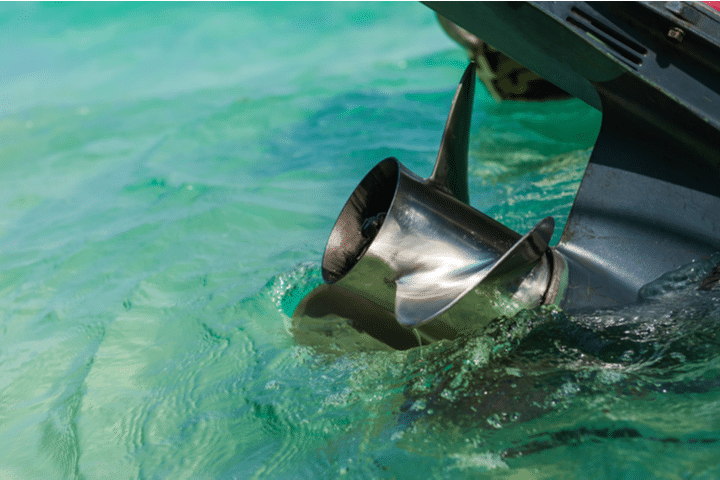
Ventilation, on the other hand, is the propeller sucking in air.
This may happen because you have your engine trimmed up to high, or it can occur because you are jumping waves and the back of the boat is actually coming up near the surface, or perhaps, you take a sharp turn, and as the boat leans, the propeller is too close to the surface. Ventilation is bad because it causes a radical reduction in thrust, and it can also cause your motor to over-rev.
Both the phenomena of cavitation and ventilation can be minimized by installing the correct propeller. Typically, since 4-blade propellers can establish a better hook up to the water, 4-blade propellers will do a better job at minimizing cavitation and ventilation than their 3-blade counterparts.
In conclusion: 3-blade vs 4-blade propeller?
When you rent a boat through Boatsetter you will have the option to rent countless boats all over the country for a variety of activities from fishing, to cruising, to water sports. Depending on your needs, you will want to either get a boat with a 3-blade propeller or a 4-blade propeller.
If you are looking for higher top speeds and all-around decent performance, you may want to get one of the popular 3-blade propellers. If you are more concerned with acceleration, handling, better fuel economy at mid-range RPMs, and a better solution to cavitation and ventilation, you may want to go with a 4-blade propeller.
Check out the hottest boats in the market at Boat types, and make sure to scroll through Boat Guides to find your next boating destination.
About us
Boatsetter is a unique boat-sharing platform that gives everyone — whether you own a boat or you’re just renting — the chance to experience life on the water. You can list a boat, book a boat, or make money as a captain.
Discover unique boat rentals near you—Only at Boatsetter

Boatsetter empowers people to explore with confidence by showing them a world of possibility on the water. Rent a boat, list your boat, or become a Boatsetter captain today.
